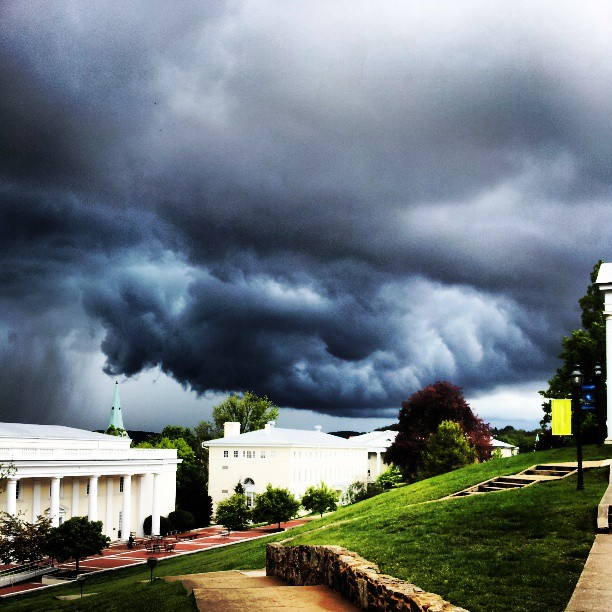Severe Weather Safety
In rapidly moving storms, there is often little warning. Minutes count. Mary Baldwin University students, faculty, and staff should familiarize themselves with the safest place in each building* on campus to take shelter in the event of a severe weather event, such as a tornado. Those who are outside and cannot immediately take shelter inside should take refuge in the lowest place possible, such as a ditch, lying face down.
Mary Baldwin encourages its community to sign up for Baldwin Alert Messages for emergency information, but also pay attention to changing weather conditions, look for approaching storms, and heed the warning signs of a tornado from the Federal Emergency Management Agency:
- Dark, often greenish sky
- Large hail
- A large, dark, low-lying cloud (particularly if rotating)
- Loud roar, similar to a freight train
A tornado watch means that tornadoes are possible. Remain alert for approaching storms. Watch the sky and stay tuned to radio and television for more information.
A tornado warning indicates that a tornado has been sighted or indicated by weather radar. Take shelter immediately.
Peak tornado season in southern states is March through May; in the northern states, it is late spring though early summer. Tornadoes are most likely to occur between 3 and 9 p.m., but can occur at any time.
*Murphy Deming College of Health Sciences, Fishersville campus, tornado plan
